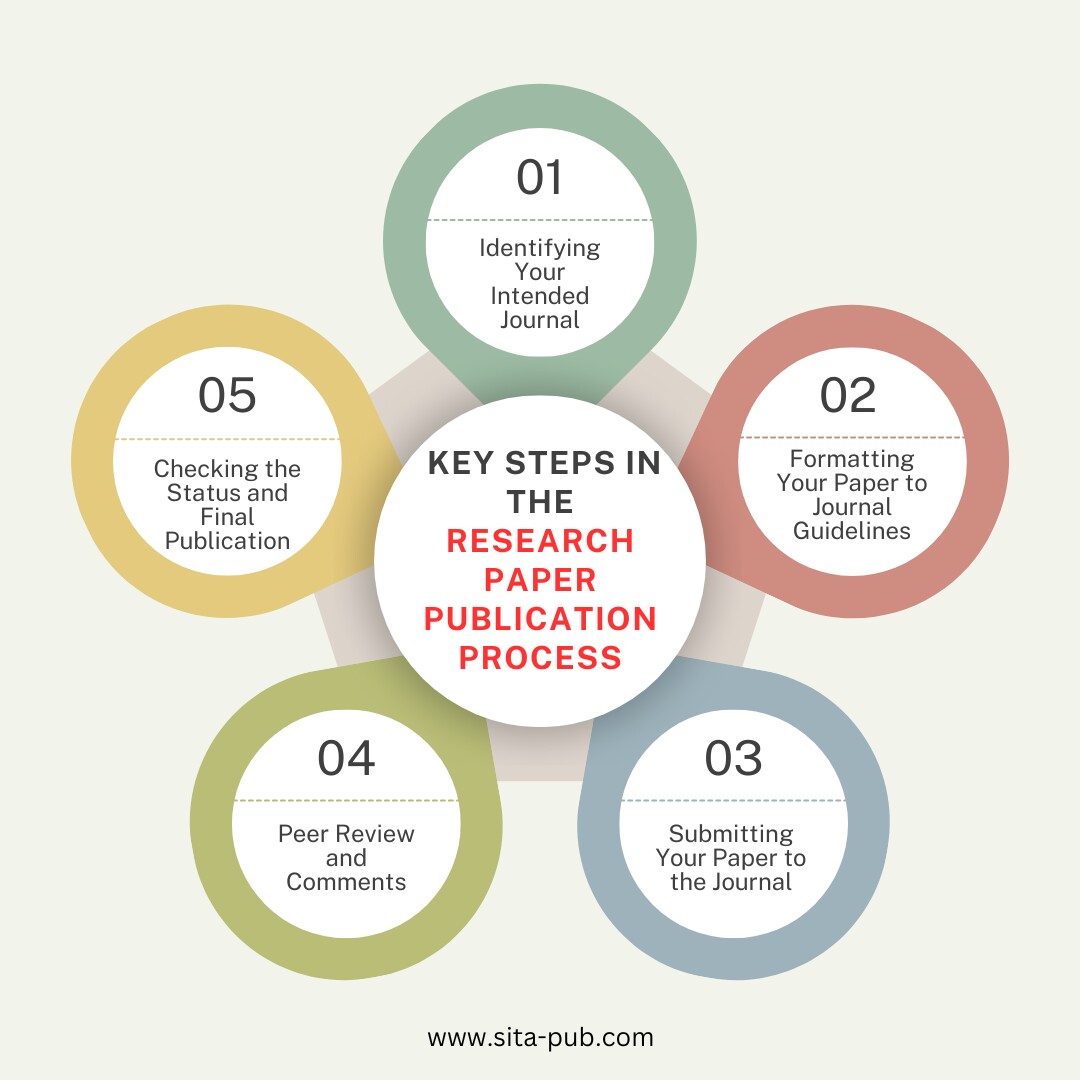What Are the Steps to Research Paper Publication?


Publishing a research paper is a significant milestone in any academic career. It signifies your contribution to the field and opens doors for recognition, collaboration, and further research opportunities. While the process can seem daunting, it's a rewarding journey with clear steps to follow. This guide will walk you through the process, from identifying the right journal to seeing your work published.
The first step is crucial: choosing the right journal for your research. This involves analyzing various factors to ensure a good fit.
This metric reflects the average number of citations received by articles published in a journal over a specific period. A higher IF generally indicates greater influence within the field.
This metric considers both the number of citations and the number of publications, providing a more holistic view of a journal's impact.
This score measures a journal's influence based on the number and quality of citations it receives.

This database indexes a wide range of scientific, technical, medical, and social science journals.
This database focuses on high-quality research in various fields, including science, technology, social sciences, and humanities.
This database specializes in biomedical and life sciences literature.
Depending on your field, consider specialized databases like JSTOR, IEEE Xplore, or ACM Digital Library.

This metric indicates the average time it takes for a journal to make a decision on a submitted manuscript.
This metric reflects the average time it takes for a manuscript to be published after acceptance.

Some journals charge authors a fee for publishing their work. This fee can vary significantly depending on the journal.


Web of Science: Use the "Journal Citation Reports" tool to access journal metrics, indexing information, and other relevant details.
Scimago Journal & Country Rank (SJR): This database provides a comprehensive overview of journals, including their metrics, indexing status, and publication timeline.
Journal Websites: Explore the websites of journals in your field to learn about their scope, editorial policies, and submission guidelines.
Once you've selected a journal, precisely follow its formatting guidelines.
Look for a "Submission Guidelines" or "Author Guidelines" section on the journal's website.
American Psychological Association (APA): Widely used in social sciences, education, and psychology.
Modern Language Association (MLA): Commonly used in the humanities, including literature, language, and cultural studies.
Chicago Manual of Style: Used in various disciplines, including history, business, and the arts.
Vancouver Style: Used in medical and biological sciences.
Plagiarism Checkers: Use tools like Turnitin or iThenticate to ensure your work is original and free from plagiarism.
Proofreading: Thoroughly proofread your manuscript for grammar, spelling, and punctuation errors. Consider seeking feedback from colleagues or professional editors.

Supplementary Materials: Include any necessary supplementary materials, such as data sets, figures, tables, or appendices.
Cover Letter: Craft a concise and compelling cover letter that highlights the significance of your research and its relevance to the journal's scope.
Submission Portal: Most journals have online submission portals where you can upload your manuscript and supporting documents.

After submission, your manuscript will be reviewed by experts in your field.
The reviewers will provide feedback on your work, including suggestions for revisions, improvements, or potential areas of concern.
Carefully consider the reviewers' comments and revise your manuscript accordingly. Address their concerns and incorporate their suggestions to strengthen your work.
Manuscript Status: Keep track of your manuscript's status through the journal's online submission portal.
Acceptance and Publication: If your manuscript is accepted, the journal will provide you with a publication date.
Proofreading and Final Approval: The journal will send you a proof of your article for final review and approval before publication.
Publishing a research paper is a journey that requires careful planning, meticulous execution, and a commitment to producing high-quality work. By following these steps, you can navigate the process effectively and increase your chances of seeing your research published in a reputable journal. Remember, the journey is as important as the destination. Embrace the challenges, learn from the feedback, and celebrate your achievements along the way.
At SITA, we understand the challenges of navigating the academic publishing landscape. Our comprehensive publication support services are designed to help researchers like you achieve their publishing goals with confidence. We offer a range of services to guide you through every step of the publication process, from manuscript preparation to final acceptance.
We help you identify the most suitable journals for your research, considering factors like impact factor, scope, indexing status (Scopus, Web of Science), and publication timelines.
We provide expert guidance on formatting and citation styles, ensuring your manuscript meets the specific guidelines of your chosen journal.
Our team of professional editors will polish your manuscript for clarity, conciseness, and grammatical accuracy, ensuring your work is ready for submission.
We offer support in understanding and responding to reviewer comments, helping you revise your manuscript to address their feedback effectively.
We can assist with manuscript submission, tracking its progress, and communicating with journal editors.


Expertise and Experience: Our team comprises experienced researchers and editors with a deep understanding of the academic publishing landscape.
Personalized Support: We tailor our services to meet your individual needs and research goals.
Quality Assurance: We are committed to providing high-quality services that meet the highest standards of academic excellence.
Customer Focus: We prioritize your satisfaction and are dedicated to providing responsive and helpful customer support.
Ready to Publish Your Research with Confidence?
Contact SITA today to learn more about our publication support services and how we can help you achieve your publishing goals.
Let SITA be your partner in academic success!
If you have any questions, inquiries, or would like to learn more about our services, please don't hesitate to reach out to us. Our dedicated team is ready to assist you.